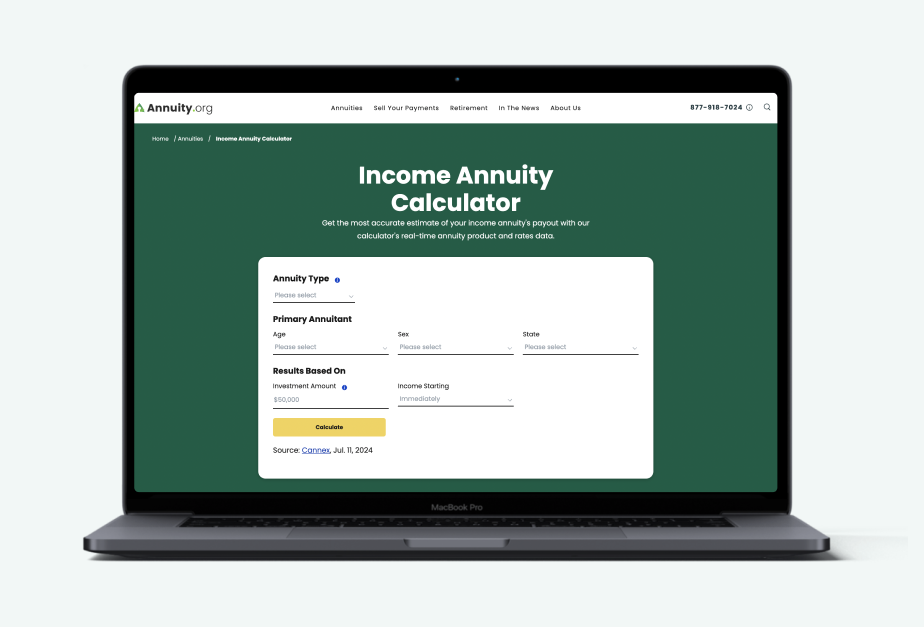Certificates of deposit (CDs) have long been a go-to for investors’ conservative buckets of money for short-term use.
CDs offer stable, predictable returns. But with interest rates remaining high, relative to the past two decades, other vehicles, such as Multi-Year Guaranteed Annuities (MYGAs), may be better choices for some savers.
MYGAs share some features with CDs: Both are low-risk vehicles that offer guaranteed fixed rates. However, some investors, especially those near or in retirement, might consider MYGAs to potentially generate higher yields, tax deferrals and optional withdrawal features.
“Current MYGA rates from A-rated carriers are approximately 0.5% to 1% higher than CD rates, but it depends on the maturity,” said Aaron Brask, principal at Aaron Brask Capital in Lake Worth, Florida.
He adds that CDs rates are close to 4.3% for maturities between one and five years, although some banks might offer higher introductory rates.
Higher Yields and Tax Advantages
The most obvious edge MYGAs have over CDs is the interest rate.
Retirement savers can currently find a five-year MYGA rate of 6.45%, a 2.05% higher return than the best current CD rates, with the best 5-year CD rate of 4.40%.
But MYGAs’ benefits can go beyond yields. These vehicles are tax-deferred, meaning you won’t pay taxes on your gains until you begin making withdrawals.
In contrast, interest on CDs is taxed annually, even if the money is still locked up.
Because MYGAs grow tax-deferred, their rate of compounding is better than investors will find in CDs.
Understanding Liquidity Trade-Offs
Before jumping into a MYGA, it’s important for an investor to familiarize themselves with potential downsides.
“MYGAs typically offer higher rates, but the surrender penalties are generally steeper if you want to cash in before they mature,” Brask says.
There may be workarounds, however.
“While most MYGAs allow penalty-free withdrawals of up to 10% annually, taking out more than that can trigger surrender charges and, in some cases, market value adjustments,” says James Comblo, CEO of FSC Wealth Advisors in Fishkill, New York.
That’s why planning is essential.
“If the money is not needed before five years, MYGAs are a good alternative to CDs,” says Chuck Czajka, founder of Macro Money Concepts in Stuart, Florida.
Who Should or Shouldn’t Buy a MYGA?
MYGAs aren’t one-size-fits-all. But they’re a strong fit for many retirees or near-retirees who don’t need immediate access to their principal and want to safely generate yield.
“Anyone who is currently investing in bank CDs may want to consider a MYGA,” Brask says.
Comblo notes that MYGAs are well-suited for investors who want to earn more than a bank can offer, but who also want to avoid market risk. They’re also appropriate for those who want to defer taxes until retirement, when they’re in a lower tax bracket.
Those who should steer clear, he says, include “younger investors seeking higher growth and flexibility, and anyone likely to need access to funds before the surrender period ends.”
How to Choose the Right MYGA Strategy
While a MYGA contract’s rate is important, so are other features like free withdrawal provisions, optional riders and duration.
Some policies allow penalty-free withdrawals under special circumstances, such as terminal illness or nursing home confinement. That adds a measure of flexibility, which may give some MYGA investors peace of mind.
“At the same time, insurance carriers are giving people choices and regularly offer higher rates for MYGAs without provisions for penalty-free partial withdrawals,” Brask says.
Comblo advises that potential MYGA buyers match the contract’s length with their liquidity needs.
“Choose a duration aligned with no expected need for those funds. Consider laddering MYGAs to improve future access and flexibility,” he says.

Is An Annuity Right For You?
What to Look for Beyond Yield
While yield, tax treatment and liquidity are central to the CD vs. MYGA decision, investors should also weigh other factors that can play a role in how these products fit into a comprehensive retirement plan.
Aspects to consider include:
- The insurer’s financial strength. Unlike CDs, which are backed by Federal Deposit Insurance Corporation (FDIC) insurance up to $250,000, MYGAs are guaranteed by the issuing insurance company. That means your safety net comes from the insurer’s solvency rather than a government agency. Independent rationing agencies such as A.M. Best, Moody’s or Standard & Poor’s help you evaluate these companies.
- How interest is credited and compounded. Most MYGAs use annual compounding. This allows gains to increase year after year. CDs typically offer similar compounding frequency, but MYGAs’ tax deferrals may deliver a higher after-tax net yield.
- Withdrawal flexibility and contract riders. While CDs offer predictable access at maturity with modest early withdrawal penalties, MYGAs’ terms can vary widely. For example, in addition to penalty-free withdrawals for circumstances such as illness or a nursing home stay, some MYGAs provide optional return-of-premium or income riders, though these may come with lower base rates.
If you’re comparing a five-year CD and a five-year MYGA, keep in mind: The MYGA might offer a higher rate, but may come with more restrictions. Also keep in mind that you’re entering into an insurance contract, which differs from putting money into a CD or even a tax-advantaged vehicle such as an individual retirement account (IRA).
Smart Uses for MYGAs in a Retirement Plan
MYGAs can play a useful role in bridging income gaps.
For example, if you want to delay claiming your Social Security benefit to maximize your payout, a MYGA can offer a guaranteed return without the risk of market exposure.
They also have a role in estate planning. Because many annuities allow you to name a beneficiary directly, a MYGA can allow your heirs to bypass probate. That can simplify asset transfers and avoid months or even years of hassle.
There’s a lot to consider when choosing a MYGA to fulfill a specific planning goal.
But while interest rates may be MYGA’s biggest attention-grabbing feature, they shouldn’t be the only deciding factor.
“As with any financial product, individuals should review any charges, evaluate liquidity needs carefully, and remember that not all MYGAs are created equal,” says Tom Buckingham, chief growth officer at Hartford, Connecticut-based Nassau Financial Group. “Rate is only part of the equation.”




